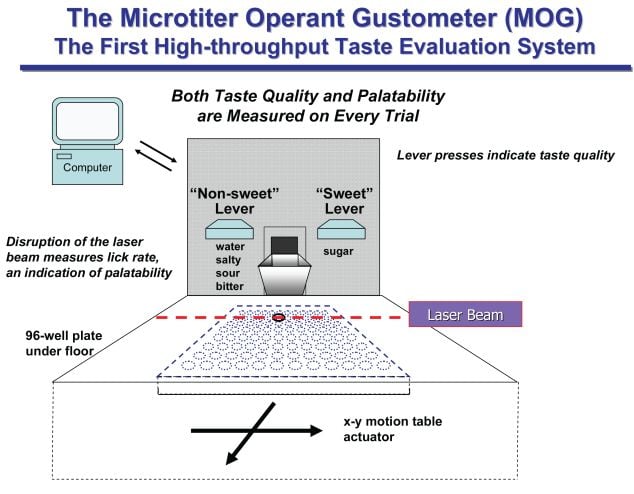The partners will use Opertech Bio’s proprietary high throughput taste evaluation technology known as the Microtiter Operant Gustometer, or MOG, to evaluate the degree of relevance of using rats as surrogate taste testers.
The first project will be in the pet food arena, said Isabelle Guiller, global research director at Diana’s pet food division.
“Within our pet food division, we develop sensorial solutions with high level of palatability, thus it is of particular interest that we evaluate taste components using the MOG. Getting quick sensorial answers with several species of animals will allow us to better evaluate the advantages and limits of using such methods, in comparison or complementarily to other methods in the area of molecular biology.”
The MOG can analyze the taste quality and palatability of scores of flavor samples simultaneously
Opertech Bio first hit the headlines a few months ago after publishing a paper about the MOG - a novel tool that can analyze the taste quality and palatability of scores of flavor samples simultaneously - a first for the industry.
The MOG uses rats trained to become expert taste testers. Over a period of weeks, the rats are trained to press levers for a food pellet reward after they have tasted flavor samples in a 96-well plate at the bottom of the MOG. To get the pellet, they must press the right lever if the solution is a standard (eg. sweet) and the left lever if the solution presented has any other taste (non-standard).
Uniquely, the system also measures the palatability of flavor samples by counting the number of times the rat’s tongue enters the well (the path of a laser beam projected across the top of the well is disrupted each time the rat licks a sample).
Firms can use the MOG in conjunction with other techniques, so once they have used cell-based assays to identify say 100 samples of interest from a big library, they can then use the MOG to further narrow the sample size down before homing in on a handful of substances that they can then test with humans.
Click here for full details and to watch the rats in action…
Click here to read more about French natural ingredients specialist Diana Group.

